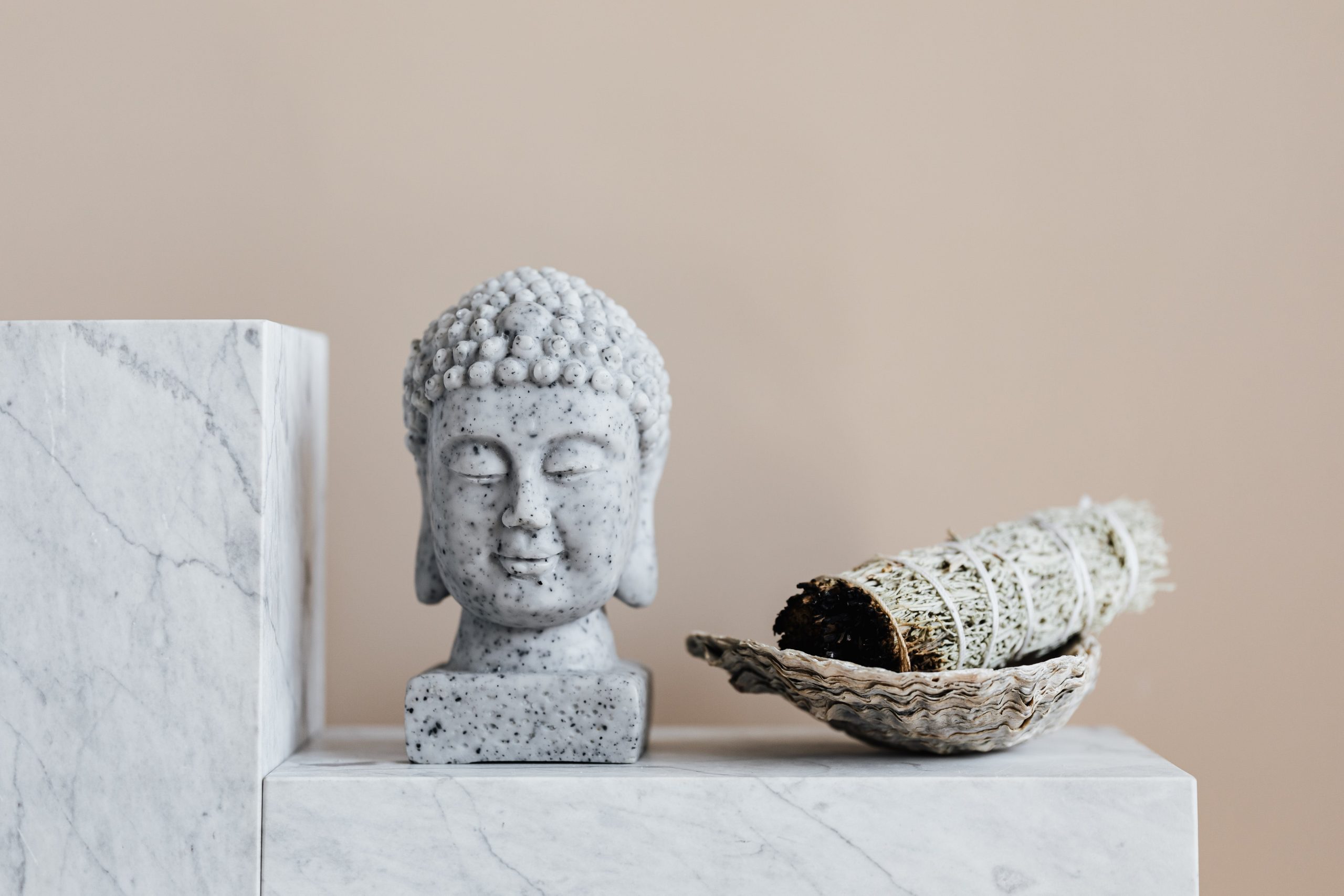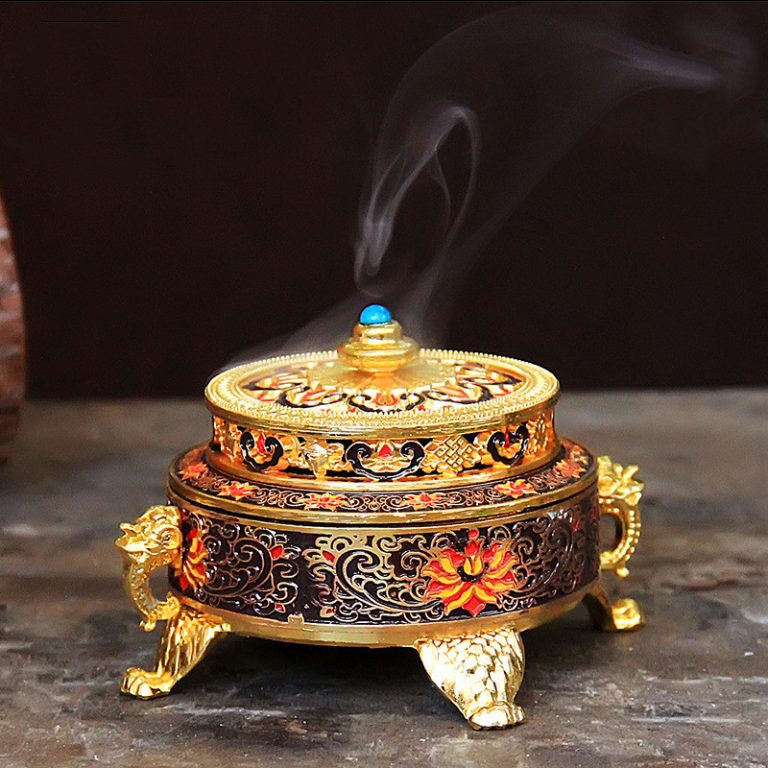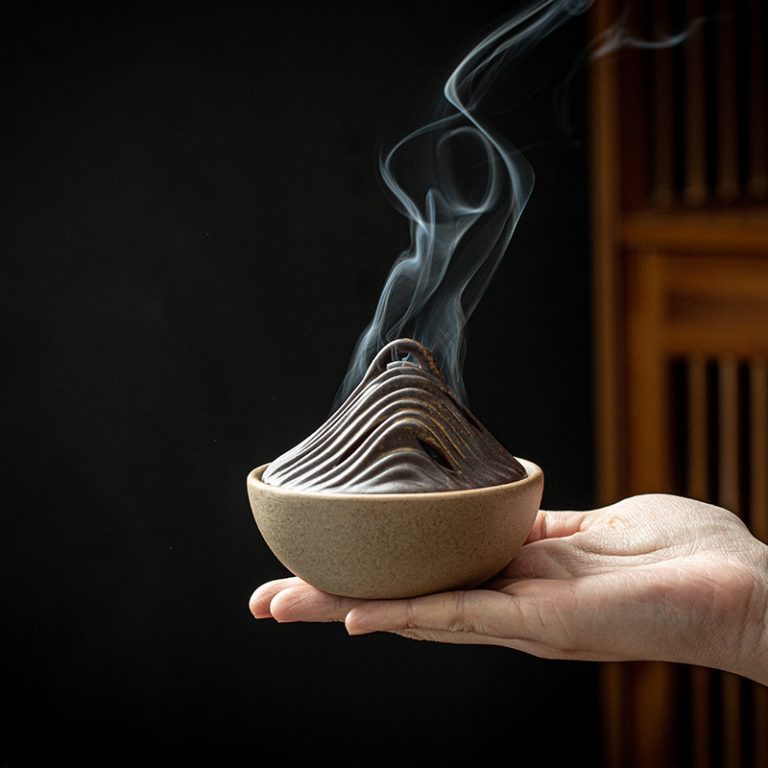Free Delivery Above $100 | Ships to the USA Only | Up to 50% Off

Enchanting Aromas: Your 2024 Incense Burner Guide!
Exploring the Mystique of Incense
Ah, the wafting aroma of incense—an age-old practice that transcends cultures and time, weaving its fragrant tendrils through sacred rituals, meditation spaces, and cozy corners alike. As someone who has recently delved into the world of incense, I’m excited to share my newfound fascination with this aromatic art form.
What is Incense?
Incense is a blend of aromatic plant materials, often combined with essential oils, that releases fragrant smoke when burned. This practice dates back centuries and has been an integral part of religious ceremonies, cultural rituals, and personal relaxation.
What Does Incense Smell Like?
The range of scents in the world of incense is vast and diverse. From the earthy notes of sandalwood to the sweet undertones of lavender, and the spicy warmth of cinnamon, each type of incense carries its own unique fragrance profile. The scent can evoke feelings of calmness, spirituality, or simply add a touch of ambiance to your living space.
Do Incense Expire?
While incense doesn’t have a strict expiration date, its potency and fragrance can diminish over time. Factors such as exposure to air, light, and moisture can influence its shelf life. To preserve the quality of your incense, store it in a cool, dry place and keep it in a sealed container when not in use.
How Do I Burn Incense?
Burning incense is a simple yet ceremonial process. I learned that a designated incense holder or burner is essential to catch the ashes. Place the incense stick or cone securely in the holder and light the tip. Allow the flame to flicker for a moment before gently blowing it out, leaving the glowing ember to release the fragrant smoke. The ritual of lighting incense can be a meditative act in itself.
As the aromatic tendrils of incense fill my space, I find a sense of tranquility and connection to a tradition that spans centuries. Whether you’re drawn to the spiritual, relaxation, or purely aesthetic aspects of incense, it’s a delightful journey worth embarking upon—one fragrant breath at a time.
Embracing Aromatic Bliss: A Guide to Incense
Greetings, fellow seekers of tranquility! Today, I want to share some insights into the basic usage and safety of one of my favorite tools for relaxation and mindfulness – incense. Let’s delve into the enchanting world of fragrant wonders and discover how to incorporate them into your daily routine.
How to Light Incense
The ritual of lighting incense is both simple and profound. To start, find a serene space where you won’t be disturbed. Choose a heat-resistant holder that resonates with you; it could be a dish filled with sand, a ceramic vessel, or any other non-flammable container.
Hold the incense stick (or other forms) by its uncoated end and ignite the opposite tip. Allow it to flame for a moment, then gently blow out the flame, leaving a smoldering ember. Place the smoky end in your chosen holder, and let the aromatic dance begin.
How to Use Incense
Using incense is an art, a practice that can elevate your mood and surroundings. Light the incense with intention, focusing on the scent and the atmosphere you wish to create. Allow the fragrant plumes to permeate the air, inviting a sense of calm and mindfulness into your space.
Consider incorporating incense into your meditation sessions, yoga practice, or simply use it as a mindful pause during a hectic day. The key is to be present and appreciate the sensory experience it brings.
How Long Does Incense Burn?
The burn time of incense varies depending on the type and size. On average, a standard incense stick may burn for about 30 minutes to an hour. However, this can fluctuate based on factors like thickness and ingredients. Enjoy the aromatic journey and let it unfold at its own pace.
Is Incense Safe?
When used mindfully and in moderation, incense is generally safe. Ensure proper ventilation by cracking open a window or door to let fresh air circulate. Be cautious not to overcrowd a small space with too much incense, as excessive smoke inhalation may lead to discomfort.
Choose high-quality, natural incense to minimize the risk of harmful additives. Always follow the instructions provided by the manufacturer and never leave burning incense unattended.
Is It Bad to Burn Incense in a Small Room?
While incense can be enjoyed in smaller spaces, moderation is key. Burning too much incense in a confined area may result in an overwhelming concentration of smoke. To strike the right balance, opt for shorter sticks or less potent scents. Open a window or door to maintain proper airflow, ensuring a delightful experience without overpowering your senses.
Inhaling Serenity: The Hidden Concerns of Burning Incense
Is incense bad for you?
As someone who cherishes the calming ambiance that incense can bring to a space, I’ve often wondered about its impact on my health. The truth is, while incense can create a tranquil atmosphere, there are some health concerns associated with its regular use.
Does incense cause cancer?
One of the most pressing questions is whether burning incense can lead to cancer. Studies have suggested a potential link between long-term exposure to certain types of incense smoke and an increased risk of cancer. The smoke produced by some types of incense contains compounds known as polycyclic aromatic hydrocarbons (PAHs), which are also found in tobacco smoke and are known carcinogens. Prolonged inhalation of these substances may contribute to the development of cancer, particularly in the respiratory system.
Is it bad to burn incense every day?
As someone who enjoys the daily ritual of burning incense to unwind, I delved into the question of its daily use. While occasional use may not pose significant risks for most people, burning incense every day may expose individuals to a higher concentration of potential pollutants. It’s essential to strike a balance and be mindful of the ventilation in the space where incense is burned. Adequate airflow can help disperse any airborne particles and minimize the risk of adverse health effects.
Pets and Incense: A Delicate Balance
I’ve always been a fan of creating a cozy atmosphere at home, and one of my favorite ways to do that is by burning incense. The soothing scents wafting through the air can truly transform a space into a tranquil haven. However, as a responsible pet owner, I couldn’t help but wonder about the potential impact of incense on my furry companions. Here’s what I discovered about the relationship between pets, particularly cats and dogs, and incense.
Is Incense Bad for Cats?
Cats are known for their curious nature, and it’s no secret that they love to explore every nook and cranny of their surroundings. When it comes to incense, it’s crucial to be cautious. Burning certain types of incense, especially those with essential oils or synthetic fragrances, can release compounds that may be harmful to your feline friend. Cats have a heightened sensitivity to certain aromatic compounds, and prolonged exposure could potentially lead to respiratory issues.
Is Lavender Incense Safe for Cats?
Lavender is often touted for its calming properties, not just for humans but also for pets. While the scent of lavender is generally considered safe for cats, it’s important to exercise moderation. Opt for high-quality, natural lavender incense, and ensure that the room is well-ventilated. If your cat shows any signs of discomfort or respiratory distress, it’s wise to extinguish the incense and provide fresh air.
Can Incense Kill Cats?
In extreme cases, prolonged exposure to certain types of incense can indeed pose serious health risks to cats. Compounds like phenols, found in some essential oils used in incense, can be toxic to felines. It’s essential to be vigilant and observant of your cat’s behavior when incense is burning. If you notice any adverse reactions such as coughing, wheezing, or lethargy, it’s crucial to seek veterinary advice promptly.
Can You Burn Incense Around Cats?
Burning incense around cats is possible, but it requires careful consideration. Always choose natural, pet-friendly incense options, and be mindful of the duration and frequency of use. Additionally, creating designated incense-free zones within your home can provide a safe space for your cat to retreat if the scent becomes overwhelming.
Is Sandalwood Incense Safe for Cats?
Sandalwood is often regarded as a safe option when it comes to incense around cats. However, as with any incense, it’s essential to choose high-quality, natural varieties. Keep an eye on your cat’s behavior and respiratory well-being, and if there are any signs of discomfort, it’s best to err on the side of caution.
Is Incense Bad for Dogs?
While dogs generally have a lower sensitivity to certain aromatic compounds compared to cats, it’s still crucial to be mindful of the type of incense you’re burning. Some dogs may be more sensitive than others, and certain fragrances could potentially cause respiratory irritation or allergic reactions.
How to Burn Incense: A Harmonious Home Environment
As a devoted pet owner and avid incense enthusiast, I understand the delicate balance required to create a harmonious home environment. Our furry friends bring immense joy to our lives, but their well-being is our responsibility. In this blog post, let’s explore how to enjoy the soothing aroma of incense while ensuring the safety and comfort of our beloved pets.
How to Light Incense Cones
As I embark on my incense journey, lighting cones has become a favorite ritual. To ensure a pet-friendly experience, I’ve discovered the importance of choosing a well-ventilated area. Lighting the incense cone with a gentle flame and allowing it to smolder provides a slow, controlled release of fragrance. This prevents any sudden, overpowering scents that could potentially distress our furry companions.
How to Burn Resin Incense
Exploring the world of resin incense has added a new dimension to my aromatic endeavors. Placing a small amount of resin on a heat-resistant surface and using a charcoal disc allows for a controlled and steady release of fragrance. This method minimizes the risk of overwhelming our pets with strong scents, ensuring they can peacefully coexist with our aromatic indulgences.
How to Burn Powder Incense
Powder incense offers a unique experience, and finding the right balance is key. Using a designated incense burner with proper ventilation is crucial. I’ve found that a small, controlled amount of powder provides a subtle and enjoyable fragrance without causing any discomfort to my four-legged companions.
How to Stop Incense from Burning
Sometimes, life demands our immediate attention, and extinguishing incense becomes a necessity. To promptly halt the aromatic journey, I simply remove the incense source from its burning surface. Placing it in a designated, fireproof container ensures a safe and swift end to the fragrant experience.
How to Put Out Incense
Safely extinguishing incense is as important as lighting it. I’ve learned to be patient and allow the incense to naturally burn out if time permits. Alternatively, a gentle tap or blowing on the ember can expedite the process. Always ensuring that the incense is fully extinguished before leaving the area guarantees a worry-free atmosphere for both pets and their human companions.
Exploring the Mystique of Incense
Ah, the world of incense—a realm where fragrant smoke dances through the air, weaving tales of ancient rituals and spiritual practices. Let’s delve into the captivating universe of incense, exploring its types, ingredients, and the mystical qualities they bring.
What Are Incense?
Incense, in its essence, is a composition of aromatic materials that, when ignited, release a fragrant smoke. This practice, deeply rooted in various cultures and religions, serves both practical and spiritual purposes. The journey of incense takes us through a myriad of scents, each holding its unique significance.
What Is Incense Made Of?
The ingredients of incense vary widely, reflecting the diverse traditions and cultures that have embraced this aromatic art. Common components include aromatic resins, essential oils, herbs, spices, and wood. The meticulous combination of these elements results in a harmonious blend that delights the senses.
What Is Copal Incense?
Ah, copal incense—a resinous treasure from the bosom of ancient traditions. Derived from the sap of certain trees, copal holds a sacred place in Mesoamerican cultures. Its fragrant tendrils are believed to connect the earthly realm with the divine, making it a choice incense for ceremonial rites and spiritual cleansing.
What Does Dragon’s Blood Incense Do?
Dragon’s blood incense, despite its mythical name, does not involve fire-breathing creatures. Instead, it emanates from the resin of the Dracaena and Daemonorops trees. This crimson-hued resin is famed for its protective properties. Burning dragon’s blood incense is thought to create a shield against negative energies, purifying both spaces and individuals.
What Is Sandalwood Incense Good For?
Ah, the soothing allure of sandalwood incense—a fragrant companion in meditation and relaxation. Derived from the heartwood of the sandalwood tree, this incense is celebrated for its calming and grounding effects. Lighting up sandalwood incense can enhance spiritual practices, promote focus, and infuse tranquility into your sacred space.
Exploring the Spiritual and Cultural Significance of Incense
In my quest for a deeper understanding of spiritual practices, I found myself intrigued by the age-old tradition of burning incense. The aromatic smoke, curling gracefully through the air, seems to carry with it a mystical ambiance that transcends cultural and religious boundaries. In this exploration, I aim to delve into the spiritual and cultural aspects of incense, with a specific focus on its use in Catholicism and Christianity.
What Does Incense Do Spiritually?
Incense has long been associated with spiritual rituals across various cultures. Beyond its pleasant fragrance, the act of burning incense is believed to have symbolic and transformative properties. Many view it as a means of connecting the physical and spiritual realms, creating a sacred space for meditation, prayer, and reflection. The rising smoke is thought to carry prayers and intentions to the divine, fostering a sense of spiritual elevation.
Why Do Catholics Use Incense?
Within the Catholic tradition, the use of incense holds a rich symbolic significance. In the context of religious ceremonies, incense is often employed to purify the altar and the sacred space, signifying the reverence and solemnity of the occasion. The rising smoke is seen as a representation of the prayers of the faithful ascending to heaven. Additionally, the pleasant aroma is believed to create an atmosphere conducive to a deeper connection with the divine.
Is Burning Incense a Sin?
The question of whether burning incense is a sin is a nuanced one and depends on the religious and cultural context. In many spiritual traditions, incense is viewed as a sacred and respectful practice, enhancing the spiritual experience. However, it’s essential to consider the intent behind the act. If burning incense becomes a form of idol worship or diverts one’s focus from genuine spiritual connection, it may be perceived differently within certain religious frameworks.
What Incense Is Used in the Catholic Church?
The Catholic Church has a specific type of incense known as “church incense” or “liturgical incense.” This blend typically includes natural ingredients such as frankincense, myrrh, and other aromatic substances. The precise composition may vary, but the intent is to create a fragrant offering during religious ceremonies. The carefully chosen ingredients contribute to the sensory experience, enhancing the sacred atmosphere of the church.
Can Christians Burn Incense?
The practice of burning incense is not exclusive to any particular religious denomination. Many Christians, both within and outside the Catholic Church, incorporate incense into their worship rituals. It serves as a tangible and sensory way to express devotion and create a sacred space for prayer and contemplation. The key lies in the sincerity and reverence with which incense is used, aligning with the individual’s personal and religious beliefs.
Exploring the Depths of Incense: Unraveling Mysteries and Practicalities
In the realm of aromatic indulgence, incense takes center stage, weaving an intricate tapestry of scents that captivates the senses. In this exploration of advanced topics, we delve into questions that often linger in the fragrant air, seeking to understand the nuances and practicalities surrounding these aromatic wonders.
Can Incense Get You High?
The allure of incense often sparks curiosity about its potential to induce altered states of consciousness. However, it’s crucial to clarify that traditional incense, crafted for religious, spiritual, or aromatic purposes, does not contain substances capable of producing a “high.” Instead, the intoxicating experience one might feel is typically attributed to the calming and meditative atmosphere created by the aromatic blend.
How Do Incense Work?
Understanding the mechanics of incense involves grasping the art of combustion. As incense burns, aromatic compounds within the plant material release fragrant molecules into the air. This process, known as diffusion, allows the scent to permeate the surrounding space, creating an ambiance that can be both soothing and uplifting.
How to Use an Incense Burner
Mastering the art of using an incense burner involves a delicate balance. Start by selecting a burner that suits your aesthetic preferences and accommodates the type of incense you have. Place the incense in the designated holder, ensuring proper ventilation. Ignite the tip, let it smolder briefly, then gently blow out the flame, allowing the aromatic dance to commence.
Will Incense Repel Mosquitoes?
The age-old belief that incense can repel mosquitoes holds some truth. Certain fragrances, such as citronella and lavender, possess natural insect-repelling properties. Burning incense infused with these scents can help create an environment less inviting to mosquitoes, providing a fragrant and functional solution to outdoor gatherings.
Will Incense Set Off Smoke Detectors?
While incense produces smoke, it typically doesn’t generate enough to trigger smoke detectors under normal usage. However, it’s advisable to exercise caution and use incense in well-ventilated areas. If in doubt, consider placing the incense away from smoke detectors and ensuring proper airflow to minimize any potential disturbances.
How to Use an Incense Box
Embracing the elegance of an incense box adds a touch of sophistication to your aromatic rituals. Place the incense within the box, allowing the smoke to gracefully escape through intricate designs or ventilation holes. The box not only enhances the aesthetic appeal but also ensures a controlled and contained diffusion of fragrance.
Can You Bring Incense on a Plane?
Traveling with incense requires careful consideration of airline regulations. While solid incense is generally permitted in carry-on luggage, it’s essential to check with the airline beforehand. Opt for securely packaged options to prevent breakage, and be mindful of fellow travelers by using subtle, non-overpowering scents.


